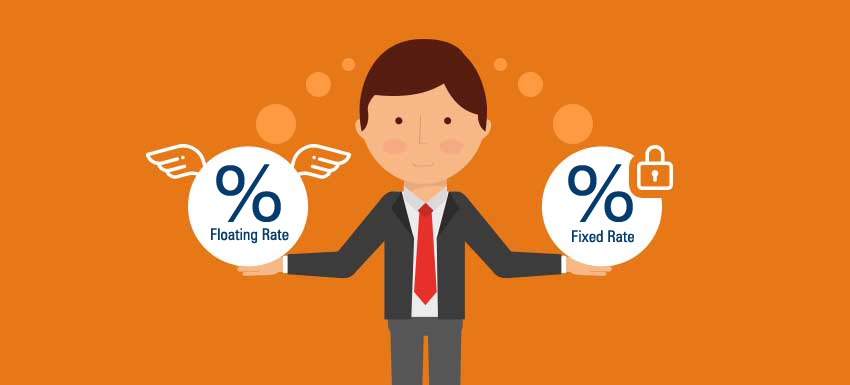THE
ORANGE
HUB
Floating vs. Fixed Interest Rates on Loan - Find Your Ideal Rate

If you are availing of a Home Loan, you have the option to choose between a loan with floating interest and fixed interest rate. As Home Loans will require you to pay Equated Monthly Instalments (EMIs) for several years, it is imperative to be careful about the decision. So, what are fixed and floating interest rates? What are their benefits and drawbacks? Does one of them make more financial sense than the other? Let us have a look.
What is Floating Interest Rate?
As the name suggests, floating interest rate means that the interest rate will vary as per the market conditions. If you are going for a Home Loan and selecting floating interest, there will be a base rate along with a small window for the unstable floating element. If at all the base rate changes, the interest rate will change as well.
Key advantages of floating interest rate
A significant benefit of floating rate is the fact that it is cheaper than a fixed interest rate. In most cases, there is a considerable difference between a Home Loan taken on a fixed rate and the same loan taken on a floating rate from the same lender.
Even if the floating rate climbs higher than the fixed rate in the future, due to the volatile nature of the interest it will fall eventually. So, in other words, the floating interest rate can help you save a considerable amount of money while repaying the Home Loan.
Drawbacks of floating interest rate
As the interest on a floating loan rate changes regularly, the monthly EMIs changes as well. This can add a certain level of instability to your monthly financial planning. It is also important to know that you can only experience savings if the floating interest rate on a Home Loan does not remain above 11.5% per annum for a long time.
What is a Fixed Interest Rate?
Home Loan on a fixed rate is exactly the opposite of floating rate. Here, the interest remains the same throughout the loan tenure. Moreover, with fixed interest loans, the initial few years of EMI payments are used for servicing the interest part of the credit and not the principal component. There is a gradual shift to the principal part in the later years.
Key advantages of fixed interest rate
As the interest remains the same throughout the loan tenure, it becomes easier for the borrowers to manage their finances as the EMI amount does not fluctuate. This type of loan is also an excellent choice for bringing a sense of security and certainty.
Disadvantages of fixed interest rate
In most cases, the fixed interest rate per annum can be 1.5% to 2% higher than that of the floating interest rate. Moreover, even if the base rate of Home Loan falls, borrowers who have taken a fixed interest Home Loan will not benefit from this fall and will continue to pay the same monthly instalments.
Floating or Fixed Rate of Interest?
Most Home Loan borrowers generally prefer taking loans on a floating interest rate. But as you can see, there are benefits and drawbacks for both of these interest rates.
Ultimately, the decision is yours to make. Understand the benefits and drawbacks in detail and compare them online to make a decision. There are now also tools like floating interest rate calculator that you can use to make the decision easier. You can even talk to a lender to choose the best option.
For disclaimer, Click Here.
Scroll to top











